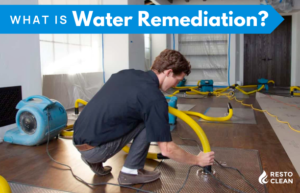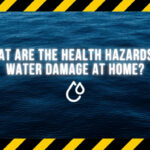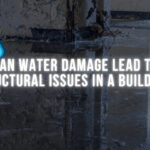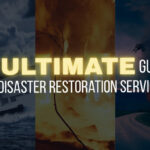
Water damage – it’s a homeowner’s nightmare, but unfortunately, an inevitable one.
Water damage can strike at any time, whether it’s from a dripping faucet, the aftermath of a flood, or a sneaky leak behind a wall.
But what happens after the initial chaos? This is where water remediation comes in.
Understanding Water Remediation
Water remediation is the solution to those moments when you look at the aftermath of a water incident and wonder, “What now?”
It’s the process of cleaning, sanitizing, and restoring (or remediating) materials where water damage has occurred. Simply put, it’s about returning things to normal after water wreaks havoc.
When water invades your home, not only does it damage your property, but it also introduces potential health hazards.
Damp environments are a playground for mold, bacteria, and other pathogens. Thus, a speedy response is vital.
The Process: What to Expect
The water remediation process can be broadly categorized into a few key steps:
Water Extraction:
Removing standing water using pumps, vacuums, and other extraction methods. The goal is to remove as much water as possible.
Drying:
Drying becomes a priority once the bulk of the water is out. This involves specialized equipment like air movers and dehumidifiers.
Cleaning and Sanitizing:
This step ensures a healthy environment. Antimicrobial treatments and disinfectants are applied to affected areas, eradicating the threat of germs, bacteria, and mold.
Restoration:
The final touch. This is where items are restored to their previous condition. For some, it might involve more intense repair or even replacement.
Water Remediation vs. Restoration
It’s easy to confuse remediation and restoration, but they are separate recovery phases.
Remediation deals with cleaning and preventing further damage, while restoration focuses on returning materials and property to their original condition.
Why is Professional Water Remediation Essential?
Undertaking water remediation is not just about fixing what’s broken; it’s about comprehensive, safe, and effective recovery. DIY might seem tempting, but water damage often involves complexities best handled by professionals.
Professionals have specialized equipment, training, and experience to handle various challenges presented by water damage. For instance, they employ Thermo hygrometers and moisture meters to precisely gauge moisture levels, ensuring a thorough drying process.
Moreover, the stakes of water damage are high. For insurance claims, not acting promptly and effectively can sometimes result in reduced compensation, making professional intervention even more crucial.
Preventive Steps You Can Take
While professionals handle the major tasks, homeowners can take specific immediate actions:
-
-
-
- Shut off the water source if it is safe to do so.
- Remove wet materials and belongings from the affected area.
- Ventilate the area by opening windows.
- Use towels, mops, and sponges to soak up standing water.
-
-
However, it’s essential to gauge the situation. If damage is extensive, it’s best to wait for professionals to ensure the most effective and safest cleanup.
Wrapping Up
Water remediation is the bridge from water-damaged chaos to a restored, safe living environment. While the process might seem daunting, it’s crucial for health, safety, and property preservation.
However, if you ever find yourself faced with water-related woes, know that expert help is just a click away.
For top-notch water remediation services, trust Resto Clean. With our expertise, restoring your space to its former glory will be a breeze.
Don’t let water damage dampen your spirits. Get in touch with us today!





